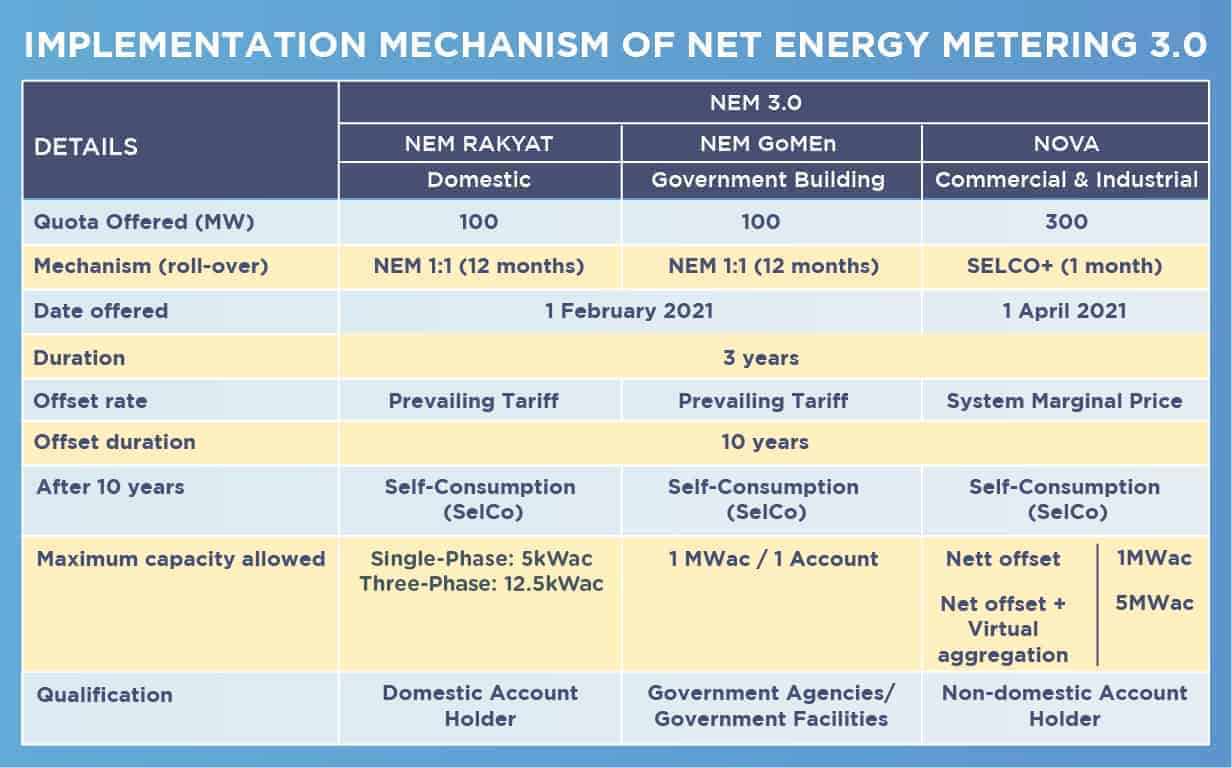Introducing NEM 3.0
The Net Energy Metering (NEM) Scheme is a solar incentive executed by the Ministry of Energy, Science, Technology, Environment and Climate Change (MESTECC), regulated by the Energy Commission (EC), and implemented by the Sustainable Energy Development Authority (SEDA) Malaysia.
It was first introduced in 2016 to further boost the uptake of solar adoption in Malaysia but it wasn’t till 2019 that the program really took off. In November 2020, the 500MW allocation under NEM 2.0 was snapped up across sectors such as residential, commercial, industrial and agriculture. In place of NEM 2.0, KeTSA (Kementerian Tenaga dan Sumber Asli) has recently announced the commencement of NEM3.0 or Net Energy Metering 3.0.
What is Net Energy Metering 3.0 (NEM 3.0)?
The NEM 3.0 program will be available from 2021 till 2023 with a quota of 100MW allocated. To further boost the uptake of solar adoption, this program will introduce three new main initiatives:
Rakyat Program (for homeowners)
Homeowners can reduce energy bills by generating your own electricity through the use of a solar PV system. The energy offset ratio is at 1:1. Roll-over period is for 12 months. The maximum solar PV system size a homeowner is allowed to install is 4kWac and 10kWac for single phase and three phase homes respectively.
NEM GoMEn (Government Ministries and Entities) Program
This initiative helps reduces government building’s energy bills through the use of a solar PV system. The energy offset ratio is at 1:1. Roll-over period is for 12 months. The maximum solar PV system size allowed is 1MWac per account.
The NOVA Program (Commercial & Industrial)
This program is aimed at reducing business costs through the use of a solar PV system by the commercial and industrial sector. It enables successful applicants to:
- CONSUME the electricity generated with a solar PV system.
- SELL excess electricity (generated with a solar PV system) back to the grid at market rate or System Marginal Price (SMP). The electricity sold will then be converted to credits and will be reflected in the following month’s electricity bill.
- OFFSET excess electricity (generated with a solar PV system) by distributing it through virtual aggregation up to 3 different electricity bill accounts under the same name.

